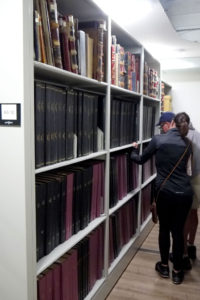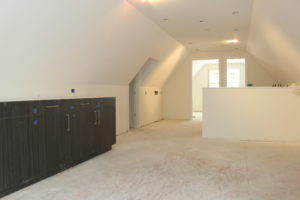Do you have a history crush? You know, that person or persons who make your heart skip a beat when you hear stories from the past of their bravery, or beauty, or brains, or even their bad ideas? Well I’ve been spending this off-season day dreaming about (one of) my history crush(es): the girl next door, wonder woman former proprietress of the Wheeler/Stallard house, Mrs. Ella Stallard.

Let me explain…my crush started when I overheard the AHS archive team discussing their hopes to restore a portrait in the AHS collection. The portrait features Mary Ella Stallard, called Ella, who was the former owner of what is now my friend next door the Wheeler/Stallard Museum. Here’s what the archives gals said about her:
Mary Ella Pattison[1] was born in New York in 1866. She travelled to Aspen by train in 1890. Ella was a talented seamstress and by 1892 she had opened “Pattison’s Dress Shop” in a rented frame house near Fifth and Main. In 1895, Ella married her neighbor, Edgar Stallard. Edgar sold insurance, acted as Clerk and Recorder for a period, and was employed to manage the Wheeler Opera house and the Hotel Jerome. In 1905, the Stallard family was invited to rent an unoccupied home on an entire block on West Bleeker Street. The Stallards rented and ultimately purchased the house, where Ella lived with her family from 1905 to the early 1940s. Edgar, who was 15 years older than Ella, passed away in 1925 leaving her alone with three sons in a sprawling home during the depths of the great recession, or the “quiet years” in Aspen. Ella’s grandniece Louiva moved to Aspen to live with her, helping with household chores. Ella sustained her family on any seamstress work she could bring in and with help from Louiva, they maintained a vegetable garden, a flock of chickens, and had a cow, which Louiva regularly rode to school. Louiva married William Stapleton in 1933. After her sons and Louiva left the Stallard home, Ella lived in the house alone until she sold it to William Tagert in 1945, who almost immediately sold it to Walter Paepcke’s Aspen company. Ella died in Pitkin County hospital in 1951.
Ever since I first over heard the facts of Ella’s life, I’ve listened in on stories about her too. Ella was a strong, dedicated lady! She had a terrible time of things providing for her family after her husband died, and suffered a broken heart when one of her sons perished at age 12. But with persistence, resourcefulness, and will she prevailed in the massive house next door! She kept chickens and a cow and tended a large garden, canning and preserving as much as she could to last winters. She took in work as a seamstress throughout her life here. She also took in and cared for two sets of relatives’ children, in addition to her own three boys. She was a trendsetter photography hobbyist, and even set up a dark room in a closet in the house. In my eyes, she defines the resilience and community-minded spirit of the “quiet years” in Aspen. And did I mention she was quite a beautiful lady?
So back to the portrait, which I’ve had the opportunity to stare at for the past few weeks. Happily, AHS has been working to raise funds to restore the crayon photograph portrait, which is one of only two images of the prominent Aspen resident and is the only depiction of Ella in the AHS collection. Damage to Ella’s portrait includes water stains, tears in the paper, discoloration, and the frame is missing glass and proper backing. This summer, the AHS archivists consulted with several conservationists and were recommended to work with Conservation Center for Art & Historic Artifacts (CCAHA). The conservation treatment process sounds extensive, which of course my beloved Ella deserves! I’ll report back on the restoration project when CCAHA gets underway – they’ve promised to send photos of the process, thank goodness, because I am going to miss her!
A.B.
(Archive Building)
The “Eye of the Archive” blog post series, authored by A.B. (personified AHS Archive Building), offers an insider’s glimpse into the goings-on at Aspen Historical Society. Tune in for posts about the Collection, restoration projects, exhibit tid-bits, news around town, and more.
AHS began raising the funds necessary to restore the artifact this summer, and has already received a generous donation from First Western Trust towards the project. For information about supporting this effort, contact Development Director Kelly May at 970.925.3721 or [email protected]
[1] Some historical documents note Ella’s last name as “Patterson,” but the majority use “Pattinson.”

























